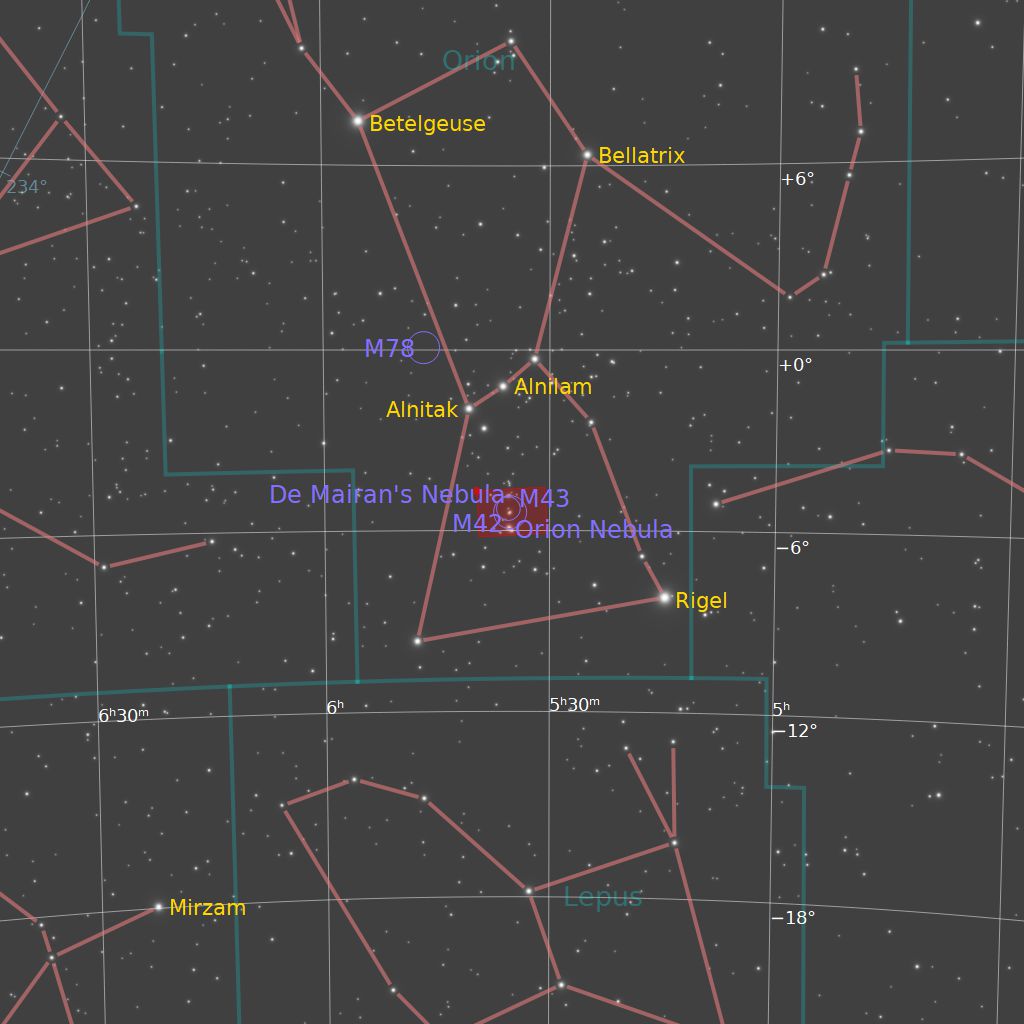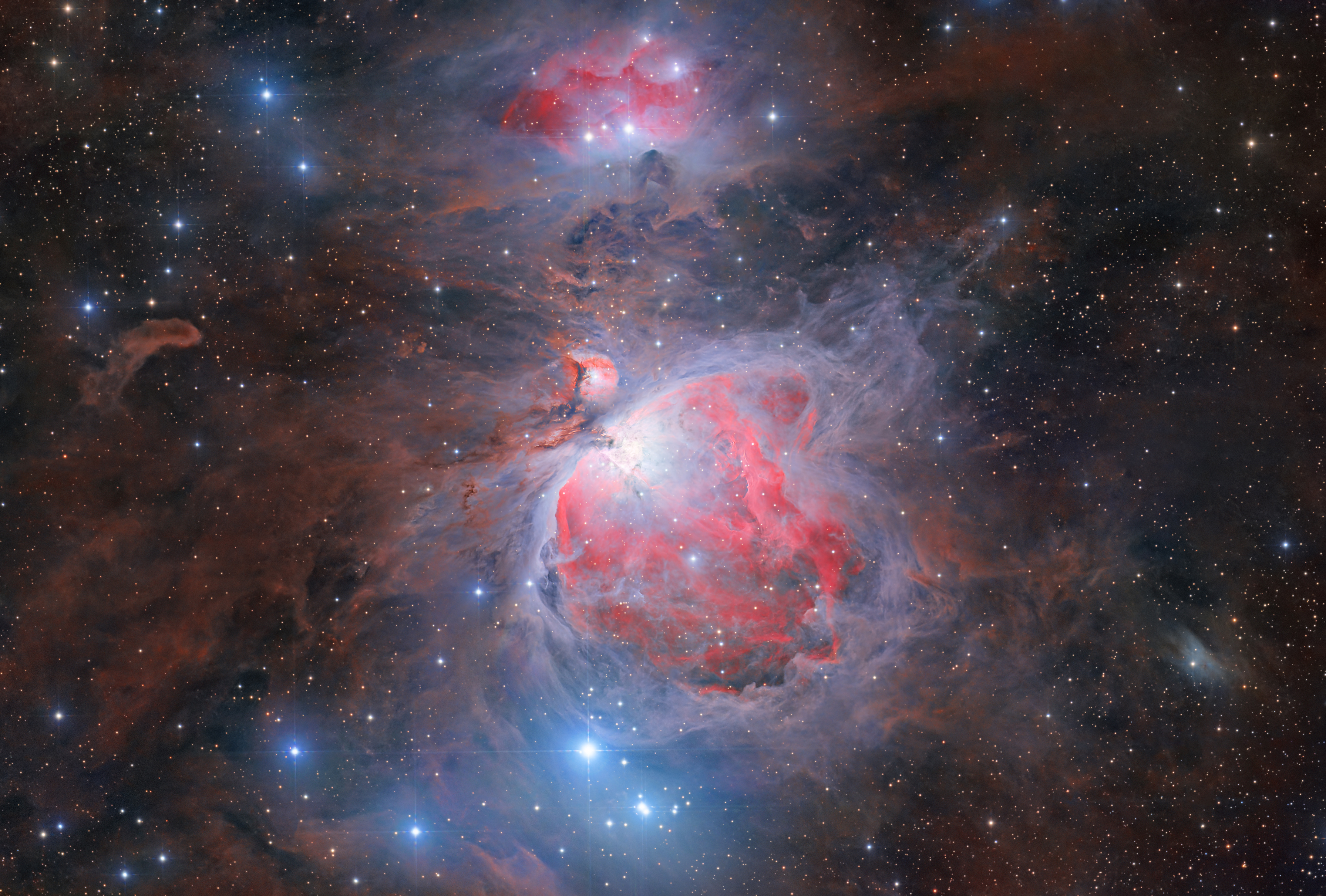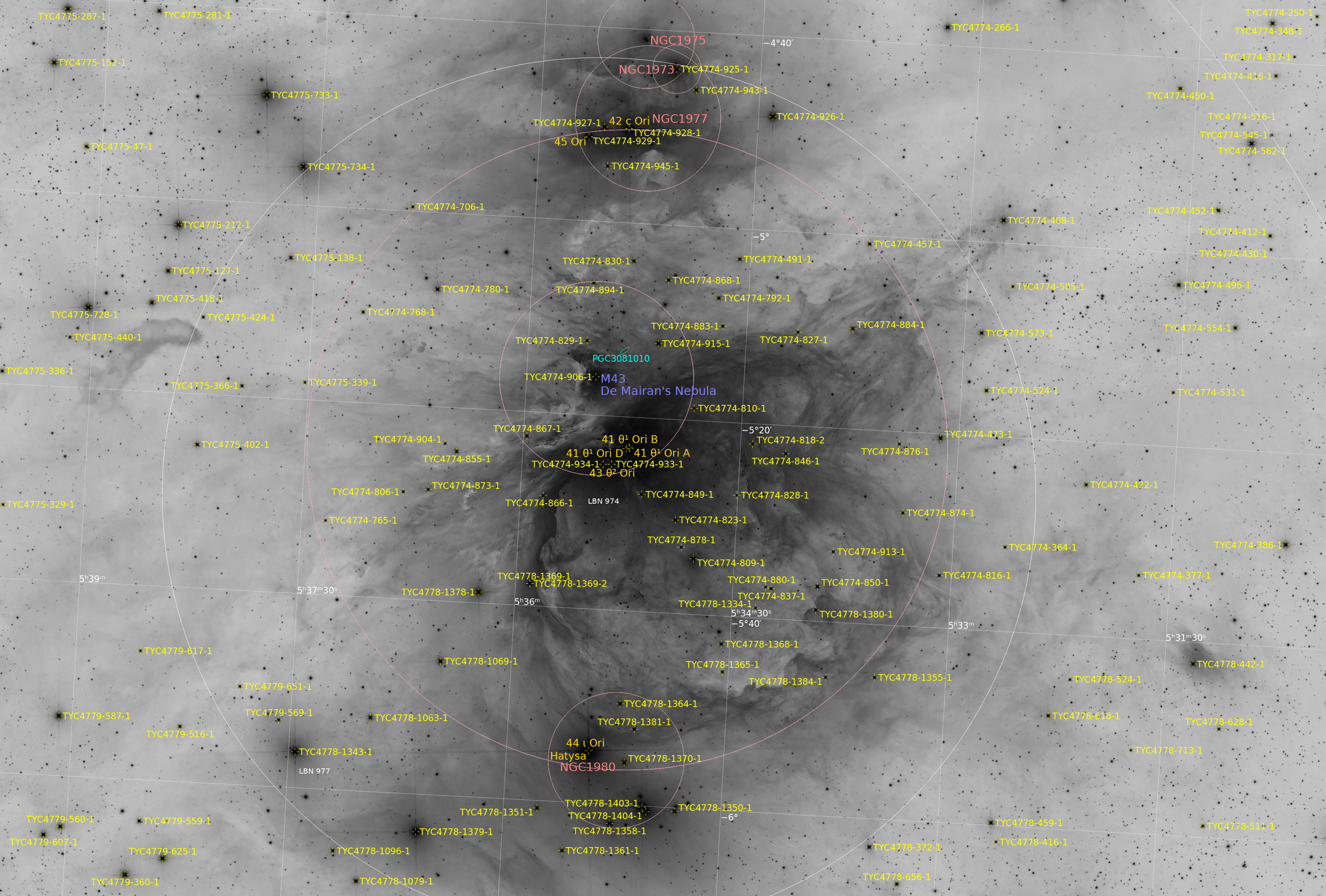

The Orion Nebula
Messier 42 (M42), commonly known as the Orion Nebula, is a massive star-forming region located approximately 1,344 light-years from Earth in the constellation Orion. It is one of the brightest nebulae visible to the naked eye and serves as a crucial site for studying stellar birth and evolution.
Spanning about 24 light-years in diameter, M42 contains a dense cloud of gas and dust illuminated by young, hot stars, particularly the Trapezium Cluster at its core. These stars emit intense ultraviolet radiation, ionizing the surrounding hydrogen gas and creating the nebula’s characteristic glow.
As a stellar nursery, M42 is rich in protostars and protoplanetary disks, offering insight into planetary system formation. Observations from telescopes such as Hubble and James Webb have revealed complex structures, including shock waves from stellar winds and intricate filaments of gas.
Messier 42 remains a focal point for astrophysical research, enhancing our understanding of the processes that shape stars and planetary systems across the universe.
-
Category
reflection/emission nebula
-
Coordinates
RA 05h 35m 17s
DEC -05° 23′ 28″ -
Distance
~ 1344 ly
-
Apparent magnitude
4 mag
-
Equipment
TS-Optics 200mm/8" ONTC f/4 Newtonian (carbon tube)
iOptron CEM70G
ZWO ASI2600MM Pro
-
Exposure
L: 100 x 180 s
L: 50 x 30 s
Ha: 75 x 300 s
Ha: 50 x 30 s
R: 40 x 180 s
G: 40 x 180 s
B: 40 x 180 s
Total Integration: 18.1 h -
Publication Date
23.02.2025

